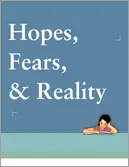The charter movement has evolved dramatically over the past 18 years. Once considered mainly an escape valve for a set of unhappy parents and fringe community groups, the charter sector has increasingly responded to the call for more consistent quality, has shown it can replicate high-performing schools faster than school districts ever have, and has introduced us all to fundamentally new models of gap-closing public schools.
Still, charter schooling has by no means hit the mainstream. According to a recent Gallup Poll, most Americans still have little or no knowledge of what charter schools are. Remarkably, however, chartering is suddenly back in vogue thanks to unprecedented attention from President Barack Obama and his Department of Education. From well-publicized charter school visits to central placement of charters in key economic stimulus programs, Secretary of Education Arne Duncan and President Obama have repeatedly sent the message that they view charter schools as an essential component of K–12 education reform strategies. As a result, states are now scrambling to lift charter school caps and to figure out how they can incorporate charters in efforts to turn around low-performing schools. Even foundation boards are turning back to charter investments.
Will all of this move charters from the margins to the mainstream? That is not yet clear. There are a number of critical tests ahead for the charter school sector. This volume of Hopes, Fears, & Reality explores these issues.




